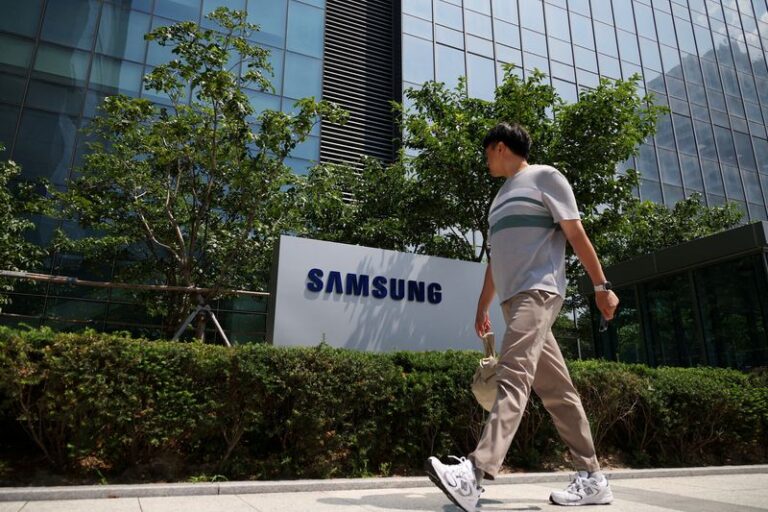By Fanny Potkin and Hee Kyung Yang
SINGAPORE/SEOUL (Reuters) – Samsung Electronics Co’s fourth-generation high-bandwidth memory (HBM3) chips have been approved for use in Nvidia Inc’s processors for the first time, three people familiar with the matter said.
But it’s a somewhat muted go-ahead, as Samsung’s HBM3 chips will for now only be used in Nvidia’s less-advanced H20 graphics processing unit (GPU), which was developed for the Chinese market in compliance with U.S. export controls, the people said.
It was unclear at this point whether Nvidia would use Samsung’s HBM3 chips in its other AI processors, or whether the chips would need to pass additional tests before being adopted, the people added.
Samsung also has not yet met Nvidia’s standards for its fifth-generation HBM3E chips, and testing of those chips is continuing, the people added. They declined to be identified because they were not authorized to speak to the media.
Nvidia and Samsung declined to comment.
HBM is a type of dynamic random access memory (DRAM) standard first developed in 2013 that stacks chips vertically to save space and reduce power consumption. It is a key component of GPUs for artificial intelligence, helping to process the vast amounts of data generated by complex applications.
Nvidia’s approval of Samsung’s HBM3 chips comes amid a surge in demand for advanced GPUs created by the generative AI boom that Nvidia and other AI chipset makers are struggling to keep up with.
With only three major HBM manufacturers — SK Hynix, Micron and Samsung — and HBM3 also in short supply, Nvidia hopes Samsung will clear its standards so it can diversify its supplier base.
Nvidia’s need for greater access to HBM3 is also expected to increase as SK Hynix, the clear leader in the field, plans to increase production of HBM3E and reduce HBM3 production, according to two of the sources.
SK Hynix declined to comment.
Samsung, the world’s largest memory chip maker, has been trying to pass Nvidia’s tests for both HBM3 and HBM3E since last year but has struggled with heat and power consumption issues, Reuters reported in May, citing people familiar with the matter.
Samsung said after the Reuters article was published in May that allegations that the chip had failed Nvidia tests due to heat and power consumption issues were untrue.
H20
Samsung could start supplying HBM3 for Nvidia’s H20 processors as early as August, according to two of the sources.
The H20 is the most advanced of three GPUs Nvidia has customized for the Chinese market after the United States tightened export controls in 2023 aimed at thwarting advances in supercomputing and AI that could benefit the Chinese military.
In accordance with US sanctions, the H20’s computing power is significantly limited compared to the H100, the version sold in markets outside China.
Reuters reported in May that H20 shipments got off to a slow start this year, with U.S. companies selling it at an underprice to competing chips made by Chinese tech giant Huawei.
But another source said sales are now growing rapidly.
In contrast to Samsung, SK Hynix is Nvidia’s primary supplier of HBM chips, having supplied HBM3 since June 2022. It also began supplying HBM3E to an unnamed customer in late March, with shipments to Nvidia, sources said.
Micron also announced that it will supply HBM3E to Nvidia.
(Reporting by Fanny Potkin in Singapore and Hee-kyung Yang in Seoul; Editing by Edwina Gibbs)

